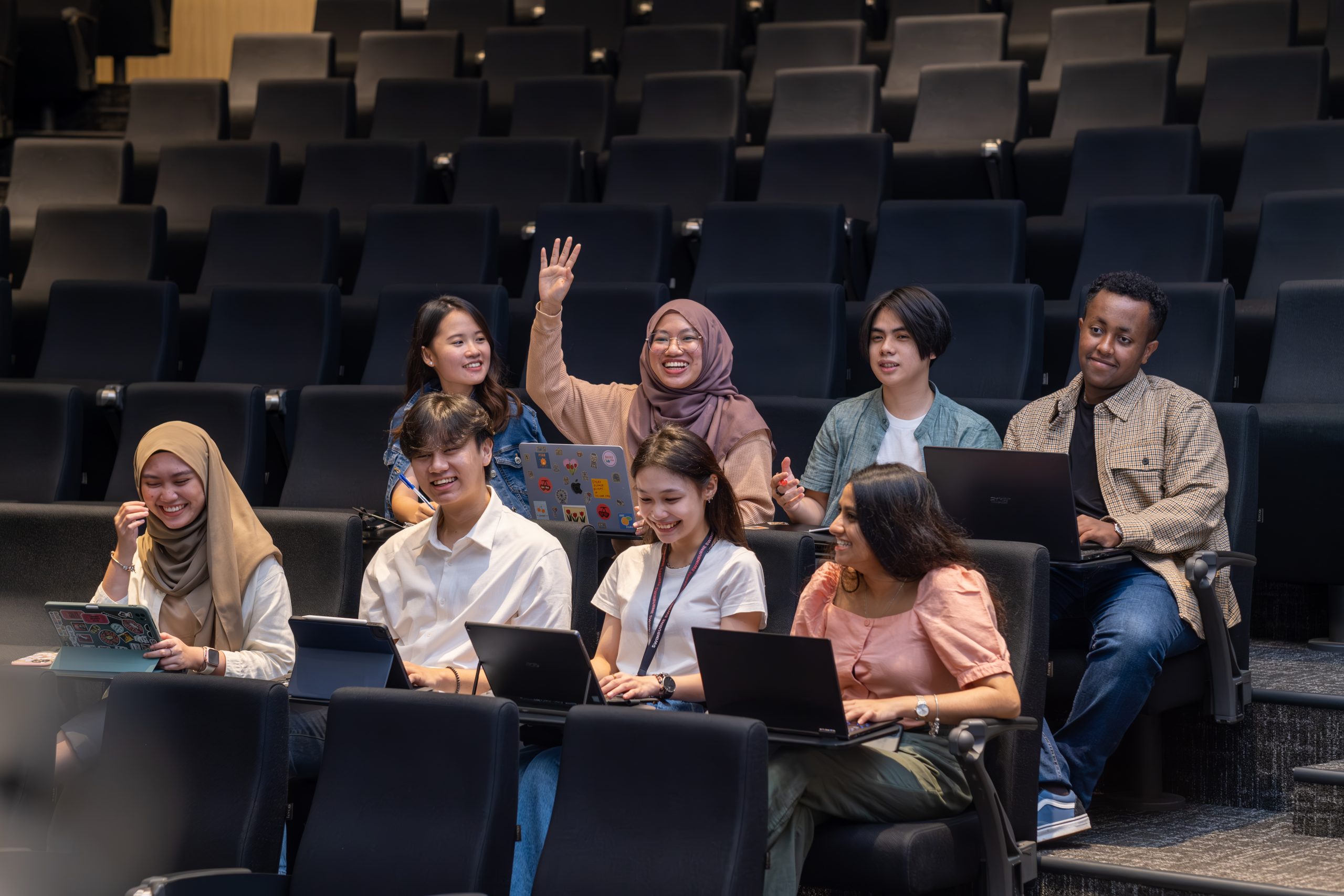In the 2024 Malaysian budget, RM17 billion was allocated for education, with RM587 billion for the Ministry of Education (MoE) and RM16.3 billion for the Ministry of Higher Education (MoHE).

Of the amount allocated to the Ministry of Education, RM1.9 billion has been earmarked for the upgrade and maintenance of schools throughout the country. Another RM930 million will be used to upgrade dilapidated buildings and infrastructure in 450 schools. This includes 185 projects in Sarawak and 155 in Sabah.
As for the budget allocated to MoHE, RM250 million is being invested in replacing and expanding internet connectivity in public universities.
Remaining competitive in the private higher educational landscape
What factors drive student enrolment?
Many students, and their parents, shop around by attending Open Days and doing virtual campus tours, for the tertiary institution that offers a wide range of programmes, specialisations and a holistic and unique campus experience.
As such, there has been a significant transformation in higher education over the past two decades in Malaysia. For example, Swinburne University of Technology (Sarawak Campus) has recently spent RM50 million investing in the expansion of infrastructure. Officially launched on 26 June 2024, the new facilities include upgraded and new sports facilities, a hostel, a library and learning areas, as well as the impressive Borneo Atrium where students can gather to hang out, eat, or work together in an idyllic atmosphere.
Such investments are part of a broader trend among Malaysian universities to upgrade their facilities to remain competitive both regionally and internationally. State-of-the-art laboratories, modern classrooms, recreational spaces and the development of new buildings are essential to be competitive in the education industry. Furthermore, students who are considering enrolling in private universities demand technology enhancements to support digital learning and research.
Some private universities have incorporated green and sustainable environments within their campuses, notably Taylors, Sunway and Swinburne. Additionally, since relocating to its flagship campus at Glenmarie in 2015, UOW Malaysia KDU University College has successfully created a green ecosystem and was awarded the Low Carbon Building Award 2017 by the Shah Alam City Council.
Infrastructure and commitment to sustainability, although laudable ideals are not alone sufficient to create a positive learning environment for tertiary students.
Factors that contribute to students’ learning
Apart from the infrastructure and learning spaces carved out on university campuses for students, the learning environment also comprises other important domains. The personal development domain encompasses the motivation, drive, and direction that students possess and apply to achieve their goals. By providing opportunities for students to navigate the pillars of social, moral and ethical development, as well as cultural awareness and sensitivity, the tertiary learning environment can enhance student satisfaction and future career success.
Additionally, another important aspect is the relationship domain. This dimension of the learning environment focuses on students’ abilities to develop meaningful relations with others. By building interpersonal relationships with other students and lecturers, a sense of community is developed, contributing to a positive psychosocial environment. Studies in various parts of the world suggest that when students build strong interpersonal relationships, their motivation, collaboration, and sense of well-being are enhanced.
The role of lecturers
Students enter university with different expectations and goals. They come from diverse backgrounds, have varied high school experiences, and possess different levels of proficiency in the English language. A classroom can be filled with students from diverse backgrounds, cultures, and nationalities, as well as with disparate learning aims. It is a challenge for lecturers to engage with such classes. The most beautiful state-of-the-art facilities might attract students but are they enough to engage students and help them gain the knowledge and skills their course requires? And will their university education meet the expectations of their future employers?
Understanding students’ background knowledge and skills, personal goals and learning styles helps lecturers to design their lectures and tutorials appropriately. In this day and age of AI tools, it is important to ensure that students engage with the subject matter and related issues and that they do not simply use AI tools to summarise ideas and to think for them. Studying at university is about learning to think critically and how to articulate those ideas and generate sophisticated analyses.
Final thoughts
In the competitive private university sector, there is a complex interplay of domains that impact the well-being, satisfaction and future success of students. When there is an alignment of excellent facilities, opportunities for personal development and the building of strong interpersonal relationships, students thrive. While not every student will emerge a confident, moral, and critical thinker and speaker, educators hope that with the right learning environment, our graduates will be much more than parrots regurgitating AI-produced texts, presentations, and speeches. Our challenge is to empower young people to learn and grow to be thinkers who can become useful and empathetic members of their communities and society.
The opinions expressed in this article are the author’s own and do not reflect the view of Swinburne University of Technology Sarawak Campus.
The authors are from the Faculty of Business, Design and Arts and can be contacted by email at dtan@swinburne.edu.my (Donna Barclay Tan), KWasudawan@swinburne.edu.my (Dr Komathi Wasudawan) and cyin@swinburne.edu.my (Dr Christina Yin)

